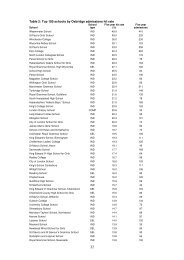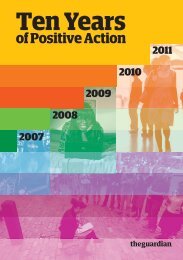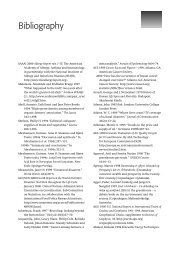KATINE COMMUNITY PARTNERSHIPS PROJECT - Guardian.co.uk
KATINE COMMUNITY PARTNERSHIPS PROJECT - Guardian.co.uk
KATINE COMMUNITY PARTNERSHIPS PROJECT - Guardian.co.uk
You also want an ePaper? Increase the reach of your titles
YUMPU automatically turns print PDFs into web optimized ePapers that Google loves.
centres. Bicycles are also being used for transporting severely ill people from villages to<br />
health centres. The remaining bicycles will be given to the VHTs after their training is<br />
<strong>co</strong>mpleted. Some of the purchased bicycles needed repair due to brakes and lights not<br />
functioning properly and will be distributed once repaired.<br />
High risk groups for malaria infection and its <strong>co</strong>mplications include children below five years of<br />
age, pregnant women and people living with HIV/AIDS. The KCPP’s baseline survey revealed<br />
that mosquito net <strong>co</strong>verage was 48% in Katine. In an effort to reduce malaria, 3250 Insecticide<br />
Treated Nets (ITNs) were procured. Since the inception of the KCPP, 1308 ITNs have been<br />
distributed to 1308 households in Ochuloi, Merok, Katine and Ojama parishes. Each<br />
household was targeted for net distribution because it was home to at least one child under<br />
the age of five. Children tend to sleep together under one net so a single bed net may benefit<br />
more than one child. Distribution of nets to children under the age of five, pregnant women<br />
and people living with HIV/ AIDS will <strong>co</strong>ntinue into the next quarter of the project. Regular<br />
visits by VHTs to households ensure that those most vulnerable to malaria (the target groups)<br />
are using the nets regularly and <strong>co</strong>rrectly. The project works closely with the existing health<br />
system ensuring that information is shared. This is important because the KCPP wants to be<br />
certain future ITN distribution from other sources does not target the same individuals as this<br />
project. During net distribution, VHTs sensitised <strong>co</strong>mmunities to ensure that there was positive<br />
health behaviour change (aiming to ensure the target groups did sleep under an ITN).<br />
As a result of capacity gaps the delivery of quality services among health centre staff and<br />
inadequate facilities at the health centres, the project <strong>co</strong>nducted refresher training in outpatient<br />
care for nine staff members working in Katine HC II, Ojom HC II and Tiriri HC IV. It<br />
also <strong>co</strong>nducted a four-day residential training for the three Health Unit Management<br />
Committees of Tiriri HC IV, Katine HC II and Ojom HC II. The project found these <strong>co</strong>mmittees<br />
already in place. 23 members attended, of which five were women. All the <strong>co</strong>mmittees have at<br />
least one women member. They were trained in their roles and responsibilities, equipped with<br />
supervisory skills, quality assurance techniques and trained in planning for health services.<br />
Immunisation equipment and supplies such as children’s weighing scales, vaccine carriers,<br />
bicycles, chairs and tables were also provided to Ojom HC II and Katine HCII.<br />
To improve on the quality of maternal and neo-natal care services, a three-day refresher<br />
training <strong>co</strong>urse was held for 19 Traditional Birth Attendants (TBAs) already existing within the<br />
<strong>co</strong>mmunity (all the six parishes), all of whom were women. They were trained in early<br />
re<strong>co</strong>gnition of high risk pregnancies, pregnancy danger signs, HIV/AIDS, prevention of mother<br />
to child transmission of HIV/AIDS (PMTCT), immunisation, re<strong>co</strong>rd keeping and knowledge on<br />
how to <strong>co</strong>nduct safe and clean deliveries. Referral re<strong>co</strong>rds at the health centres show that<br />
several referrals have been made from the <strong>co</strong>mmunity by TBAs since their training.<br />
Improved access to quality education<br />
The household baseline survey revealed that 75% of primary school going age (6-12 years)<br />
children are currently attending school; lower than the 81% for all rural areas. Gender equity in<br />
the ratio of boys to girls enrolled has only been achieved in Merok parish while the widest<br />
gaps were in Katine/Ojama and Olwelai.<br />
KCPP six monthly narrative report - October 2007 to March 2008 14












